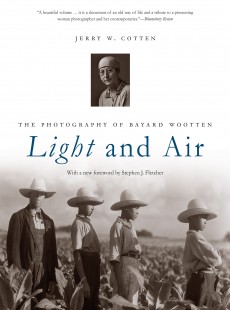
Light and Air
The Photography of Bayard Wootten
Jerry W. Cotten
 Publisher: University of North Carolina Press
Publisher: University of North Carolina Press
Imprint: The University of North Carolina Press
Published: 08/2017
Pages: 272
Subject: Photography
| University of North Carolina
Print ISBN: 9780000000000
eBook ISBN: 9781469634050
DESCRIPTION
Originally trained as an artist, Wootten worked in photography's pictorial tradition, emphasizing artistic effect in her images at a time when realistic and documentary photography increasingly dominated the medium. Traveling throughout North Carolina and surrounding states, she turned the artistry of her eye and lens on the people and places she encountered.
Having opened a studio in her hometown of New Bern in 1905, Wootten moved to Chapel Hill in 1928, where her clients included the University of North Carolina. Between 1932 and 1941, she also provided photographs for six books--including Cabins in the Laurel, Old Homes and Gardens of North Carolina, and Charleston: Azaleas and Old Bricks--lectured extensively, and exhibited her photographs as far away as New York and Massachusetts.
Light and Air features 190 illustrations, including 136 duotone reproductions of Wootten's photographs taken in North Carolina, South Carolina, Alabama, and Tennessee--many of which have never before been published. Though she was an accomplished landscape and architectural photographer, some of Wootten's most notable images were the portraits she crafted of black and white Americans in the lower reaches of society, working people whom other photographers often ignored. These images are perhaps her most enduring legacy.




